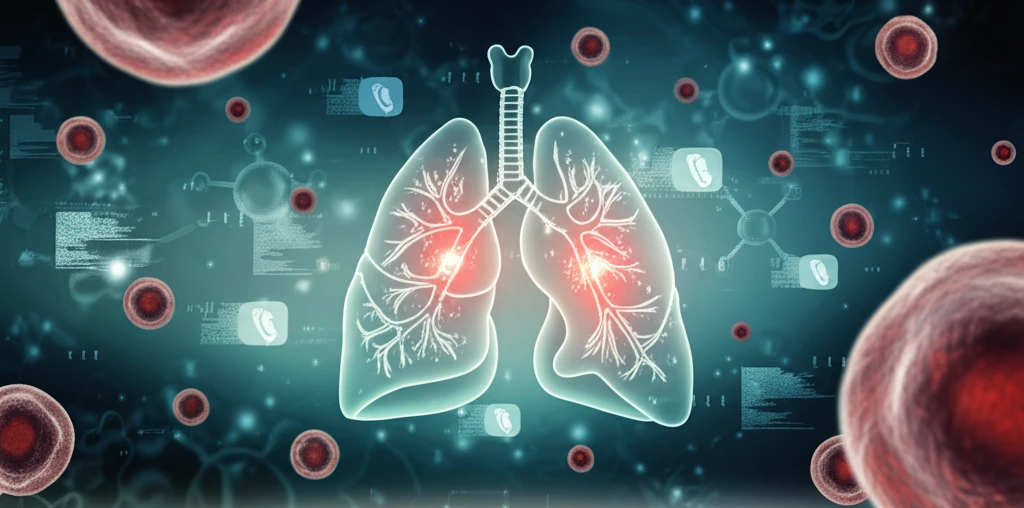
Breathe Easier: Cutting-Edge Lung Research Offers Hope for Respiratory Distress
"Discover the latest breakthroughs in understanding and treating lung injury, from regulatory T-cells to obesity-induced stress."
Lung health is critical, yet respiratory distress and acute lung injury (ALI) remain significant challenges. Recent research is offering new insights into the complex mechanisms that underlie these conditions, paving the way for innovative treatments and preventive strategies. This article delves into some of the most promising studies highlighted by junior investigators, shedding light on potential breakthroughs in respiratory care.
From understanding the role of regulatory T-cells in alveolar repair to exploring the impact of obesity on lung endothelial function, these studies represent a significant step forward in our understanding of the respiratory system. We'll explore how these findings could translate into tangible benefits for those at risk of or suffering from lung injuries.
Whether you're a healthcare professional, a patient, or simply interested in the latest medical advancements, this overview provides an accessible look at the cutting-edge research that's shaping the future of respiratory health. Prepare to discover how science is working to help us all breathe a little easier.
T-Cells and Lung Repair: How Regulatory T-Cells Can Enhance Epithelial Proliferation

Alveolar damage is a common consequence of lung injury, and the body's ability to repair this damage is crucial for recovery. Epithelial progenitor cells play a vital role, differentiating into thin type I alveolar epithelial cells to restore a functional alveolar surface. Regulatory T-cells (Tregs) have been identified as key players in resolving experimental lung injury and aiding patients recovering from acute respiratory distress syndrome.
- Key Finding: Keratinocyte growth factor (KGF) produced by regulatory T-cells (Tregs) plays a direct role in promoting alveolar epithelial proliferation.
- Experimental Model: Transferring Tregs into mice with endotoxin-induced lung injury or pneumonectomy showed that KGF-producing Tregs enhance the rate of type II alveolar epithelial cell (AT2) proliferation.
- In Vitro Confirmation: Coculture experiments further confirmed that Treg-expressed KGF has a direct impact on AT2 cell proliferation.
- Implications: Enhances our understanding of lung repair and highlights the role of Tregs in reparative processes.
Breathing Easier: The Future of Lung Health
The studies highlighted here represent just a fraction of the ongoing research aimed at improving lung health and combating respiratory distress. As scientists continue to unravel the complex mechanisms underlying lung injuries, we can expect to see even more innovative approaches to treatment and prevention emerge. By staying informed and supporting research efforts, we can all contribute to a future where breathing easier is a reality for everyone.
